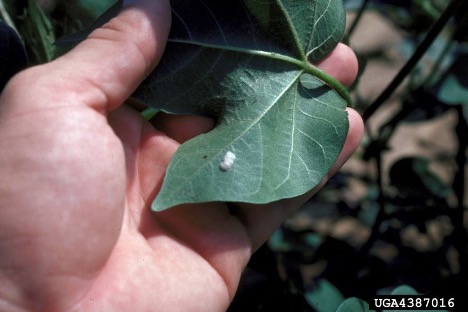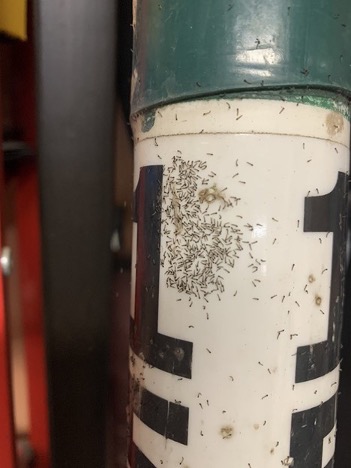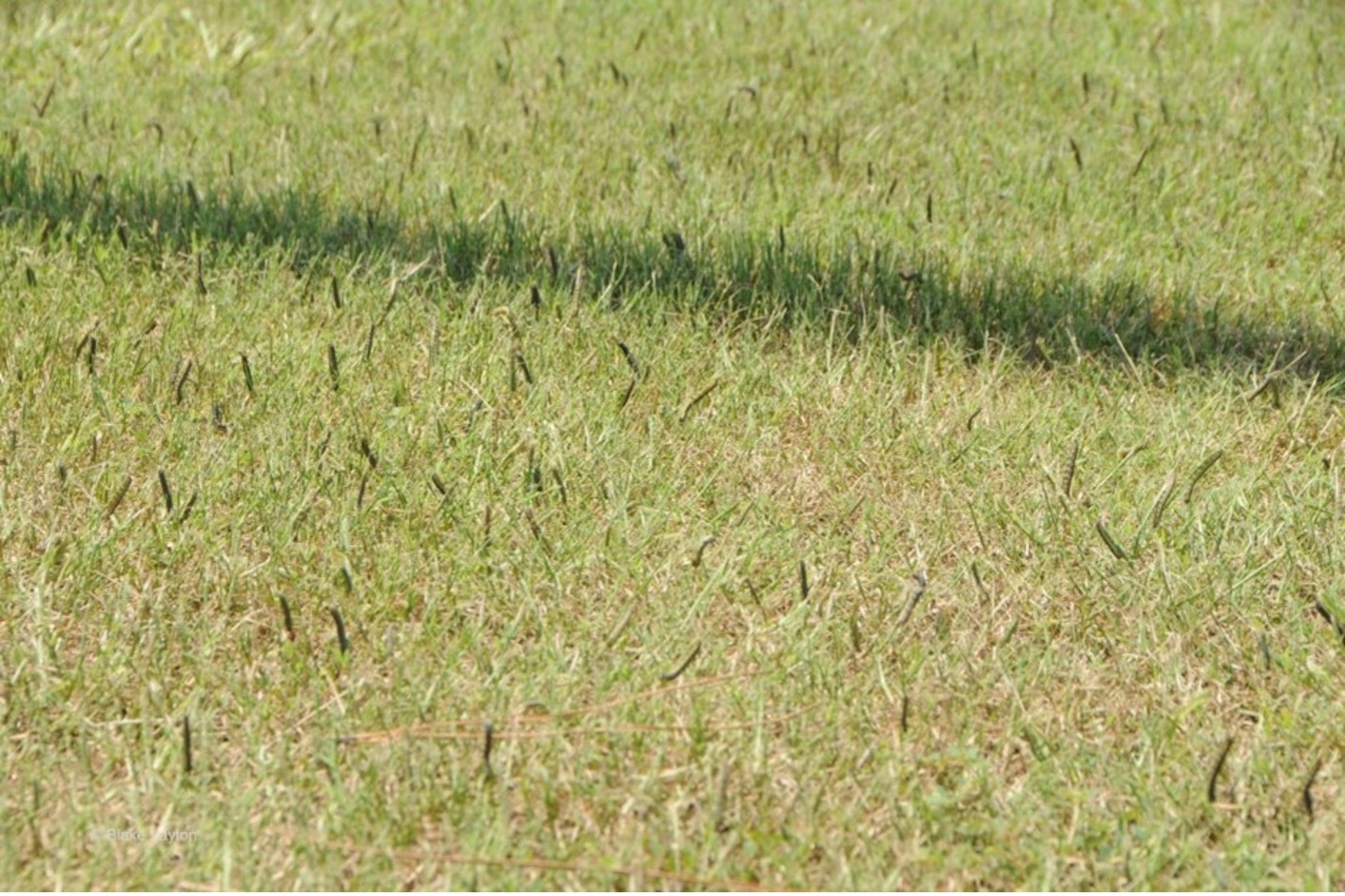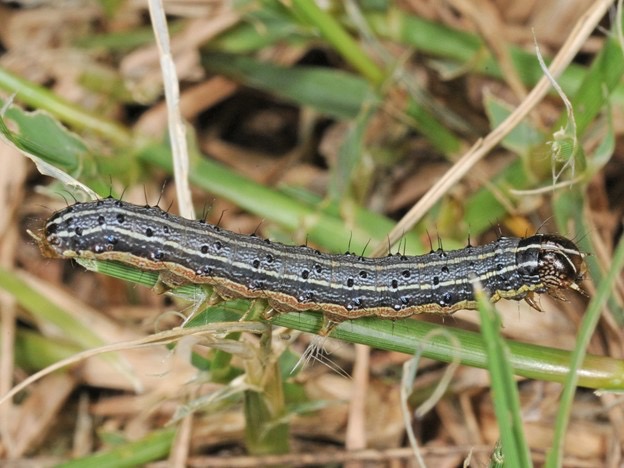David Smitley, Michigan State University Extension, Department of Entomology – September 24, 2021
A fall armyworm outbreak is now causing damage to lawns, golf courses and other turfgrass in some places in Michigan.

New fall armyworm egg masses are appearing this week on golf courses, in yards and many other places in southern Michigan. The egg masses were deposited by moths that recently flew into the area. Fall armyworm moths may fly 100 miles or more before laying eggs, so they could be coming from outbreaks reported this summer in other midwestern states.
When females deposit eggs, they cover them with hairs from their abdomen (Photo 1). Although only the size of a dime, each egg mass contains 100-200 eggs (Photo 2). If enough egg masses are deposited in turfgrass, thousands or tens of thousands of caterpillars may emerge and begin feeding (Photos 3 and 4).

It is unlikely to see much turf injury the first two weeks after egg hatch, but when they reach a length of 0.5 inch or more, they could begin to strip all the blades of turfgrass, turning the lawn brown from the scalping damage. In some cases, the caterpillars eat grass plants down to the base. This type of scalping can damage lawns and fairways, particularly if lawns are sunny and dry. Grass in moist soils may recover from the scalping injury.


If you see some brown or scalped areas of your lawn or fairway, look closely for the armyworm caterpillars. When damage is obvious, you will see hundreds of caterpillars. More damage can be prevented by applying a pyrethroid insecticide labeled for use on turfgrass with one of the following active ingredients: bifenthrin, cypermethrin, sumithrin, deltamethrin, cyfluthrin or another synthetic pyrethroid. Sevin Insect Killer no longer has carbaryl as the active ingredient. It now contains cypermethrin, which should work well. For all of these, use the label rate and wait until the spray is dry before allowing use of the treated turfgrass.
For those that would like a safe insecticide that does not harm beneficial insects including pollinators and predators, Bacillus thuringiensis (B.t.) will work on the small caterpillars but it may not work well when they are more than 0.5 inches long. Also, it only lasts one or two days after it is sprayed, so caterpillars could move back into a treated area from surrounding areas.
An insecticide treatment is not recommended unless some turf damage is observed. However, because of the large scale of the outbreak, which includes most of Michigan, it would be wise to check high value, managed turfgrass sites sometime in the next few days, and be prepared to spray hotspots.
Fall armyworm, Spodoptera frugiperda, is mostly a pest in the southern United States, rarely reaching Michigan in large enough numbers to become a problem. It does not survive the winter in midwestern states, so infestation depends on moths flying north each spring and summer. This is an unusual year, with heavy infestations appearing in most midwestern states.


